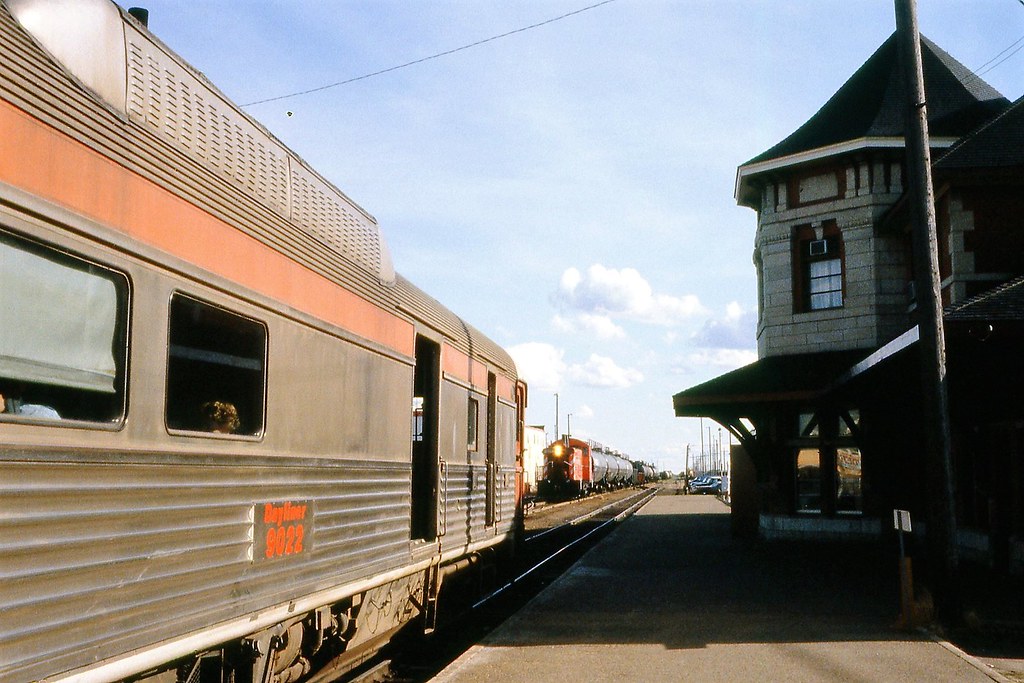
Walker Yard in Edmonton is a major rail yard and train observation spot, primarily used by Canadian National Railway. It serves as a hub for freight operations, featuring multiple tracks and facilities for assembling and disassembling trains. Enthusiasts can observe a variety of locomotives and railcars in action.
Photos
Sign in to upload photos
No Photos Yet
Be the first to share photos of this location!
Edmonton (Walker Yard) – Edmonton, Alberta, Canada | Train Spotting Location
Trainspotting Experience
A typical visit rewards you with the layered rhythm of yard drills, remotely controlled hump sets, and main-line freights throttling up as they clear the terminal. From public vantage points on 121 Street NW, 127 Street NW, and the pedestrian path paralleling 124 Avenue, you can watch cuts of cars roll over the mini-hump at the west end, feel the deep chug of wide-nose GEVOs idling only a few dozen metres away, and hear the squeal of retarders carrying across the flat prairie air. Trains move at yard limits—10 to 25 km/h inside the bowl—but departures on the Edmonton–Jasper and Edmonton–Calgary mains accelerate quickly, giving both slow-motion close-ups and full-power run-bys in the same session. Expect constant background noise from switch motors, horns, and yard radios; ear protection is handy for longer stays.
Landscape, Setting & Local Atmosphere
Walker Yard sits on level terrain just north of the North Saskatchewan River valley, surrounded by light-industrial warehouses and grain elevators that echo Edmonton’s prairie heritage. Vegetation is sparse: hardy poplars and aspen line drainage ditches while waist-high buffalo grass fills the unused right-of-way strips. The open skyline guarantees long sightlines and big-sky sunsets, especially in winter when alpenglow paints locomotives in pink and gold. Summers deliver warm, dry air with late twilight that stretches golden hour to nearly 10 p.m.; winters are crisp, often below ‑20 °C, but crystal-clear air and steam plumes give photographs dramatic contrast.
Type & Frequency of Train Activity
Canadian National owns and operates the yard, handling roughly 30 to 40 road trains plus dozens of yard movements every 24 hours. Traffic is almost entirely freight:
• Intermodal: 6–8 double-stack trains daily between Prince Rupert/Vancouver and Toronto/Chicago.
• Bulk commodities: unit grain, potash, sulphur, coal—about a dozen trains combined.
• Energy products: manifest and unit crude oil blocks bound for U.S. refineries.
• General merchandise: mixed freights linking Edmonton to Winnipeg, Saskatoon, and Calgary.
No scheduled passenger service runs through the yard, though VIA Rail’s transcontinental “Canadian” passes on the nearby main line without entering the bowl. Motive power is dominated by CN’s modern Dash-9s, ES44ACs, and AC44C6Ms, but leased power from BNSF or CPKC occasionally appears, adding variety.
Best Angles for Photos & What Railfans Enjoy Most
- 121 Street Overpass: Elevated, unobstructed east-west panorama of the entire class yard—ideal for catching hump operations with the downtown skyline as backdrop. Mid-morning light favors east-facing shots; afternoon sun silhouettes departing westbounds.
- 127 Street Footbridge: A lower angle that places you almost eye-level with nose-out locomotives at the diesel shop. Blue-hour exposures capture headlight flare and yard lamp reflections.
- Yellowhead Trail Service Road: A side-on vantage only 20 m from the departure tracks, perfect for panning 100-car manifests powering up. Best from 17:00 to sunset when warm light washes the right side of westbound units.
Telephoto lenses (200–400 mm) compress the yard’s maze of rails, while wide-angle lenses (18–24 mm) accentuate endless strings of red CN boxcars. Tripods are recommended for night photography; sodium-vapor lighting casts a distinctive amber glow railfans love.
Historical or Cultural Relevance
Walker Yard traces its roots to 1908 when the Grand Trunk Pacific established a terminal to serve booming prairie agriculture. After the 1919 amalgamation into Canadian National, the site expanded through mid-century modernization, including Canada’s first generation of automated retarders. The yard is named after CN executive W.G. Walker, who championed Edmonton as a divisional headquarters. While the original wooden roundhouse is long gone, the current diesel shop still occupies the historic footprint, and rail historians point out concrete foundations from early 20th-century water towers near the east end ladder.
What Makes This Spot Different
Unlike rural main-line hotspots that offer fleeting 60-mph fly-bys, Walker Yard immerses you in the choreography of a working classification terminal. You can observe the full lifecycle of a train: arrival, breakup, retagging, hump, car inspection, power swap, and departure—all within one location. The sheer scale (over 60 classification tracks) coupled with public overpasses that legally overlook the bowl provides photographic access rarely available at North American hump facilities. Add Edmonton’s extreme seasonal light—17-hour midsummer days and sparkling winter nights—and Walker Yard gives railfans material that is both dynamic and uniquely Albertan.
Localisation
Coordonnées :53.584863, -113.525684
Seasonal Information
For observing trains at Walker Yard in Edmonton, spring and fall offer mild weather and vibrant scenery. Summer provides long daylight hours, while winter offers unique snowy landscapes but requires warm clothing. Check for any special rail events and be mindful of increased activity during peak tourist seasons.
Other Interesting Locations
Looking for more spots? Browse the complete list of train spotting locations.
Quick Information
Country
Canada
Region / State / Province
Alberta
City
Edmonton
Spot Type
Yard
Best Times
Best hours to observe trains at Edmonton's Walker Yard are typically during weekday mornings (7-9 AM) and evenings (5-7 PM) for peak freight activity.
Access & Amenities
Parking
Not available
Shelter
Not available
Restrooms
Not available
